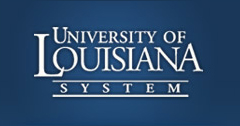Event Title
Teaching Theory, Research, and Service in the Cemetery: A Service-Learning Project
Location
Hamilton Hall 108
Session
Session 5
Start Date
11-4-2014 2:15 PM
End Date
11-4-2014 3:15 PM
Description
This service-learning project is designed to involve students in a cemetery-research preservation project. It commences first in the classroom where students are introduced to anthropological theories and methodological concepts. After the learning process, students take an ethnographic field trip to a historical cemetery where they are instructed to gather data from tombstones of families and individuals that pertains to lessons learned in the classroom, such as social identity and symbols. The research-service component also requires them to record observed environmental problems or preservation needs via notebooks, digital camera, cell phones or other electronic devices. As an outgrowth of this project since 2006, students have adopted a burial site for preservation and beautification; participated in identifying deteriorating monuments, tombstones and markers, and secured temporary markers for the unknown. Finally, they have used the data for research presentations at professional conferences, academic and community service programs.
Teaching Theory, Research, and Service in the Cemetery: A Service-Learning Project
Hamilton Hall 108
This service-learning project is designed to involve students in a cemetery-research preservation project. It commences first in the classroom where students are introduced to anthropological theories and methodological concepts. After the learning process, students take an ethnographic field trip to a historical cemetery where they are instructed to gather data from tombstones of families and individuals that pertains to lessons learned in the classroom, such as social identity and symbols. The research-service component also requires them to record observed environmental problems or preservation needs via notebooks, digital camera, cell phones or other electronic devices. As an outgrowth of this project since 2006, students have adopted a burial site for preservation and beautification; participated in identifying deteriorating monuments, tombstones and markers, and secured temporary markers for the unknown. Finally, they have used the data for research presentations at professional conferences, academic and community service programs.
